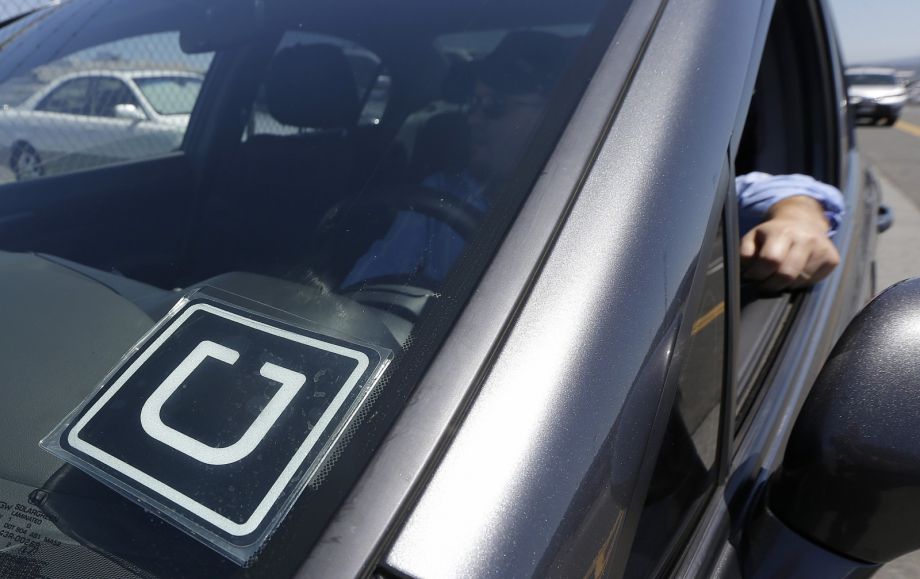Harry Campbell started driving for Uber and Lyft in 2014. At the time, he says, he was working full-time as an aerospace engineer for Boeing, but started driving because it seemed like a fun and flexible way to earn some extra money. He still drives for both.
After his first weekend of driving, Campbell started looking for blogs, resources or online communities of drivers for ride-hailing companies. He was shocked at the lack of what he found, he says. About a week later, he started his own site: The Rideshare Guy.
In early 2015, Campbell left his full-time job to focus on blogging and driving. He has since been featured as an industry expert by no fewer than 14 media outlets, including The New York Times, NPR, Bloomberg and WIRED, with quotes or mentions in many more. The Rideshare Guy is now also a podcast, and he has also made numerous appearances on others’ podcasts. Recently, he made his first contribution to a think tank report on the Uber business model, from the Economic Policy Institute (EPI).
“It was a welcome surprise to have my thoughts included because I think there’s a large disconnect between policymakers and the drivers themselves,” Campbell says via email. “A lot of the discussions I’ve seen/heard rarely involve drivers themselves and I don’t think many policymakers actually understand what it’s like to be a worker in the on-demand economy.”
The report, authored by EPI President Lawrence Mishel and Vice President Ross Eisenbrey, is a direct rebuttal to a proposal floated last year by economists Seth Harris and Alan Krueger to create a new, third category of worker in-between full-time worker and independent contractor dubbed the “independent worker.”
Harris and Krueger’s proposal hinged largely on a key hypothetical situation: If a driver has two on-demand ride apps open at once, but isn’t currently driving a passenger or on his way to driving a passenger for either of them, should the driver be compensated and if so, by whom? “The best legal answer,” Harris and Krueger wrote, “seems to be that there is not a good answer.”
The problem, according to Eisenbrey, is that no one talked to drivers about that exact situation.
“It was not a great thing that there was nobody who actually had driven for Uber on any of the panels at the forum,” he says, of the event where he first heard Harris and Krueger talk about their idea. “There really wasn’t a good worker voice.”
Eisenbrey points to at least one key piece of knowledge missing from that lack of representation: If an Uber ride request is not accepted by a driver within 15 seconds, Uber treats it as refused and lowers the driver’s acceptance rate, which can lead to “deactivation” — the term Uber uses for firing a driver. “That really changes the picture,” he says.
As Eisenbrey and Mishel write in their report, “The pressure to maintain a high acceptance rate is so great that it also leads drivers to undertake business that they would not pursue if they truly were independent contractors and demonstrates Uber’s control over a driver’s time.”
That level of control, they argue, is but one reason Uber drivers are employees, not independent contractors. They don’t see the need for a new categorization either.
There was an AFL-CIO lawyer on that December 2015 panel, who Eisenbrey says provided thoughtful comments. And Krueger himself had earlier been commissioned by Uber to conduct a driver survey released in 2015, but in gathering that survey data about time spent driving and earnings, it seems Krueger did not get a chance to ask about how the Uber app actually works for drivers.
After the forum, Eisenbrey and Mishel went back and began Googling for driver voices about using two ride-hailing company apps at once. They found Campbell immediately.
“He had a little video about doing it, while he was in his car. Had one app open, as soon as he got a request he’d turn the other app off, and then take the ride,” Eisenbrey recalls. “We reached out to him, and he became our avenue into the world of the driver, since he’s talked to hundreds, maybe thousands of drivers.”
They talked to Campbell several times, read some other pieces by people who had studied it and talked to drivers, and read other blog posts by Campbell and other drivers who’ve contributed to The Rideshare Guy or other blogs.
Campbell told Eisenbrey and Mishel that Uber gives drivers warnings when an acceptance rate falls below 80 percent, and if rates don’t improve quickly the driver is deactivated. The authors dug around and found other sources to corroborate the enforcement of such policies in locations as far as Victoria, Australia.
“The EPI paper is not only very thorough but also very accurate because they spoke with people like me and Alex Rosenblat who are very familiar with the app and what it’s like to be a driver,” Campbell adds.
Another interesting finding Eisenbrey and Mishel highlight: Uber has provided its drivers with a minimum-guaranteed-wage program since at least mid-2014. It differs by city and by the particular time of day drivers are active on the app, but can routinely end up being below the minimum wage for any given locality, according to Eisenbrey. He encourages state or federal departments of labor to have their wage theft investigators look into it. “If a driver works for Uber and at the end of the week he earned $6 an hour, it’s wage theft,” he says.
“The Department of Labor has been proactive in certain areas of the economy where they know that there are rampant wage theft violations, and targeted resources to them, but not this one yet,” Eisenbrey adds. “They only have 1,100 or so wage theft investigators for the seven and a half million employers in the country.”
Campbell generally shoots for $15 to $20 an hour before expenses as an Uber/Lyft driver. He says there are people who make more by driving busier times and cities, but there are also people who make a lot less. In general, Campbell notes, there is a lot of pay variability since driving does require some skill and there are also expenses to consider.
“Obviously, it’s impossible to talk to every single driver, but people like me act as good intermediaries,” Campbell says. “I’m not aware of any official initiatives to amplify driver’s voices but I think it’s an important issue. There are going to be lots of decisions made about the future of this type of work in the next few years and my hope is that workers won’t be left out.”
The Equity Factor is made possible with the support of the Surdna Foundation.

Oscar is Next City's senior economic justice correspondent. He previously served as Next City’s editor from 2018-2019, and was a Next City Equitable Cities Fellow from 2015-2016. Since 2011, Oscar has covered community development finance, community banking, impact investing, economic development, housing and more for media outlets such as Shelterforce, B Magazine, Impact Alpha and Fast Company.
Follow Oscar .(JavaScript must be enabled to view this email address)

















